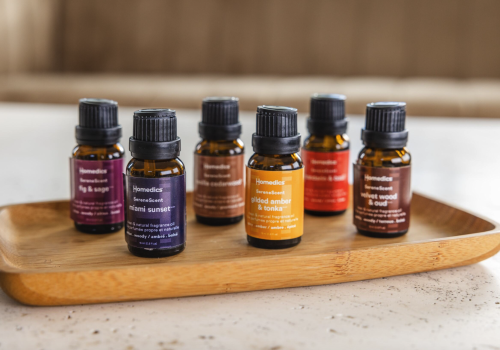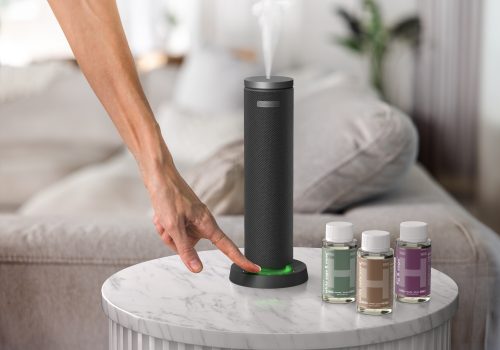How Does Air Compression Work to Improve Circulation?
Understanding How Air Compression Works for Enhanced Circulation
Massage guns, cryotherapy, sleep pods, protein supplements, infrared saunas, ice plunges: there are seemingly countless ways in our contemporary era to combat the aftereffects of a strenuous workout, accelerate recovery, and boost physical prowess.
Add air compression therapy to the ever-growing list, if you haven’t done so already.
Lauded by “fitfluencers,” physical therapists, and medical doctors alike, intermittent pneumatic compression (IPC) therapy, as it’s technically known, has been passionately welcomed by professional and casual athletes for the benefits it may provide—chiefly, improved circulation and the myriad gains that come with it.
How do these savvy tools work, exactly, and what sort of advantages do they offer? Here’s the lowdown on air compression therapy and why it might be the missing component between you and optimal athletic performance.
What is Intermittent Pneumatic Compression (IPC) Therapy?
Intermittent Pneumatic Compression (IPC) therapy refers to specialized devices, typically cuffs and sleeves, that cycle air from the environment. This air is then exerted at intervals through a pump to deliver recurring “squeezes” of targeted pressure to different regions of the body, typically the:
- Feet
- Ankles
- Calves
- Hips
- Arms
- Shoulders
Studies indicate that these devices have the power to stimulate blood flow. Why that’s important? Read on.
How and Why Did Air Compression Become a Modern Trend?
Intermittent pneumatic compression therapy has its roots in traditional compression therapy, a timeworn form of healing originally used in the Hippocratic age to combat the natural forces of gravity and manage leg wounds. Overtime (as in, a lot of time) the ancient versions of compression therapy evolved into medical-grade wearable compression garments such as:
- Socks
- Stockings
- Hoses
- Wraps
- Bandages
All of these are used for various reasons, which we’ll look at shortly, but nearly all are related to the positive potential effects compression can have on circulation.
Fast forward to the digital age. Technology, coupled with a growing interest in wellness, helped spawn advanced pneumatic compression devices that weren’t used only to diminish swelling and decrease the possibility of blood clots, but also to enrich well-being as a whole.
Athletes, understandably, caught on.
What Are the Different Forms of Intermittent Pneumatic Therapy?
Socks, stockings, wraps, bandages, and more are still widely utilized. Unlike IPC devices, which offer air-pumped pulses of pressure, these garments provide continuous pressure. (Think of the tightness of a bandage over a wound.)
Indeed, those who prefer best-in-class, more sophisticated ways to benefit from compression therapy have a buffet of products from which to choose:
- Compression boots
- Compression suits
- Compression massagers
- Compression mats
What’s the difference between the IPC devices and those that are making headlines today?
It mostly comes down to the fact that some newer versions of compression therapy boast multi-chamber pumps that promote both circulation and the “clearance” of waste.
Who Might Benefit from Air Compression Therapy?
In addition to athletes keen on reducing their recovery time and bolstering their performance, IPC therapy may offer benefits to pregnant women, elderly populations, and people who sit or stand for hours, such as those who must travel long distances and work on their feet for several hours a day.
In medical settings, IPC therapy may be recommended to people who have:
- Recently undergone surgery
- Suffered a stroke
- A blood disorder that raises the risk of blood clotting
- An injury that impacts their veins
- Deep vein thrombosis (DVT)
- Chronic venous insufficiency (CVI)
- Cancer
Additionally, IPC therapy may be recommended to individuals whose mobility has been impacted, such as from a stroke, obesity, or physical injury.
How Does Air Compression Work?
Air compression therapy operates by those very intermittent pulses, which are believed to have a direct impact on the veins.
Rather than allowing blood to pool in certain areas of the body, these blips of targeted pressure compress the veins and urge blood to continue traveling, at an admirable speed, along its route to the heart and other vital organs throughout the body.
How Does Compression Help Circulation?
The pressure created by air compression is thought to enhance circulation by directing it away by the rules of gravity and back toward your heart while eliminating waste like carbon dioxide along the way. The faster waste is removed from your body, the faster your recovery time can be.
At the same time, air compression therapy and its effects on circulation may:
- Positively affect the function and amount of lymph fluids in the body
- Decrease the localized swelling, stiffness, and sore muscles after exercise-induced muscle damage
- Reduce the risk of injuries
What’s more, compression therapy has been associated with lower levels of lactate: a substance that may contribute to the fatigue you might experience after a high-intensity workout. Contrary to popular belief, an accumulation of lactic acid isn’t what lends itself to delayed onset muscle soreness (DOMS) or fatigue after a workout. Rather, lactate has a hand in exhaustion, but not exercise-induced aches and pains.
Why Is Blood Circulation Crucial to Well-Being?
You may not give a great deal of thought to the blood that courses beneath your skin, but, put simply, it’s what keeps you alive.
Over 60,000 miles of blood vessels course through your body, ferrying the roughly eight pints of blood you store to attend to different tasks, like:
- Transporting waste to your liver for elimination
- Supplying your cells, tissues, and organs with the vital nutrients and fresh oxygen they need to function
- Supporting cardiovascular health
Proper circulation ensures that your organs and tissues remain oxygenated, well-fed, healthy, and primed for fitness. Inadequate, or poor, circulation, on the other hand, may put you at risk for a host of health conditions, including blood clots, infections, and blockages.
How Can You Improve Your Circulation?
Posing the mere question “How do I improve my circulation?” is the first step toward optimizing your blood flow and strengthening your overall health.
Here’s a handful of both tried-and-true and novel approaches:
- Revamp your diet – Over-indulging in sugars, fats, salt, and cholesterol—the stuff that’s found in high-glycemic processed foods like donuts and French fries—saps your blood’s capacity to perform its duties properly. Meanwhile, foods rich in the nutrients your cells need to thrive, such as olive oil, salmon, oats, and blueberries, may foster vascular health.
- Maintain your ideal weight – Obesity is one of the leading causes of poor circulation. Why? Carrying excess pounds places pressure on your body, especially the veins in your legs. Shoot for staying within a healthy BMI, and you may reap the rewards of improved circulation.
- Prioritize exercise – The correlation between adequate exercise, particularly aerobic exercise, and excellent circulation cannot be overstated. If resistance training and stretching aren’t part of your present mix, consider weaving them into your workout regimen.
- Tweak your lifestyle – You might occasionally enjoy a glass of wine, or can’t imagine starting your day without a cup of coffee. Nonetheless, alcohol, caffeine, and smoking can negatively impact your vascular health and potentially keep you from reaching your physical peak in athletic endeavors and beyond. Furthermore, your blood vessels may thank you for two other cornerstones of wellness: ample hydration and quality sleep.
Lastly, consider our answers to the inquiries “how does air compression work?” and “how often should you do compression therapy ?” Investing in an intermittent pneumatic air compression device, whether it’s a compression massager or a full-leg air compression system, might take your fitness goals to a whole new level.
Are There Any Side Effects from Intermittent Pneumatic Compression Therapy?
The answer to this depends entirely on your overall health, as well as your reasons for using IPC therapy.
The most common reactions to using an air compression device include:
- Skin reactions
- Sweating (underneath the device)
- Increased warmth
In other words? Unless you have a health condition such as peripheral vascular disease or your physician has prohibited you from using compression devices, you might feel right at home using a top-shelf, OTC compression tool at home.
Finesse Your Fitness Routine with Homedics
Exercise is key to genuine health and well-being. Yet, the possible repercussions of intense exercise—such as muscle soreness, stiffness, and fatigue—may put even the most dedicated athletes on the sidelines for a time.
Homedics may have the remedy you need to remain committed to your pursuits. Our compression systems were designed with ease of use and your fitness and wellness goals at top-of-mind.
Whether you’re searching for a natural solution to post-HIIT pangs, hope to improve your flexibility with the assistance of an air compression back stretching mat that works with your body, or want to nurture your circulation in the name of whole-body health, we have the product you need to find enhancement and relief.
Sources:
Sports Illustrated. 13 post-workout recovery tips for optimal muscle recovery.
https://www.si.com/showcase/fitness/post-workout-recovery-tips
Journal of Applied Physiology. Enhanced muscle blood flow with intermittent pneumatic compression of the lower leg during plantar flexion exercise and recovery.
https://journals.physiology.org/doi/full/10.1152/japplphysiol.00784.2017
Polymers. Compression garments for medical therapy and sports.
https://www.ncbi.nlm.nih.gov/pmc/articles/PMC6404358/
Cleveland Clinic. Intermittent pneumatic compression.
https://my.clevelandclinic.org/health/treatments/14791-intermittent-pneumatic-compression-ipc-device
Cleveland Clinic. Compression therapy.
https://my.clevelandclinic.org/health/treatments/23449-compression-therapy
Johns Hopkins Medicine. Blood clot treatment.
https://www.hopkinsmedicine.org/health/treatment-tests-and-therapies/blood-clot-treatment
Healthline. What is compression therapy and what are the benefits?
https://www.healthline.com/health/what-compression-therapy-and-its-benefits-are#how-it-works
University of Rochester Medical Center. It’s all about blood flow!
https://www.urmc.rochester.edu/MediaLibraries/URMCMedia/noyes/migrated-media/PT-Blog-April_1.pdf
Cleveland Clinic. Blood vessels.
https://my.clevelandclinic.org/health/body/21640-blood-vessels
Cleveland Clinic. Blood flow through the heart.
https://my.clevelandclinic.org/health/articles/17060-how-does-the-blood-flow-through-your-heart
Cleveland Clinic. Poor circulation.
https://my.clevelandclinic.org/health/diseases/21882-poor-circulation
Tufts Medical Center. 5 foods to promote vascular health.
https://www.tuftsmedicalcenter.org/news-events-media/news/web/vascular/5-foods-for-vascular-health
Cleveland Clinic. How to improve blood circulation.
https://health.clevelandclinic.org/how-to-improve-blood-circulation-naturally/
Johns Hopkins Medicine. 3 kinds of exercise that boost heart health. https://www.hopkinsmedicine.org/health/wellness-and-prevention/3-kinds-of-exercise-that-boost-heart-health
Physiological Research. Pathophysiology of exercise-induced muscle damage and its structural, functional, metabolic, and clinical consequences.
https://www.ncbi.nlm.nih.gov/pmc/articles/PMC8549894/
Cancer Research UK. Compression treatment for lymphoedema.
https://www.cancerresearchuk.org/about-cancer/coping/physically/lymphoedema-and-cancer/treating/compression
The Engineering of Sport 6. Intermittent pneumatic compression technology for sports recovery.
https://link.springer.com/chapter/10.1007/978-0-387-45951-6_70
Healthline Is it possible to get rid of lactic acid in your muscles?
https://www.healthline.com/health/how-to-get-rid-of-lactic-acid#the-cause-of-muscle-burn
Manual Therapy, Posturology & Rehabilitation Journal. Effect of resistance exercise with arm sleeve compression garments accelerates blood lactate removal.
https://mtprehabjournal.com/revista/article/view/1220
Breast Cancer and Gynecologic Cancer Rehabilitation. Intermittent pneumatic compression.
https://www.sciencedirect.com/topics/medicine-and-dentistry/intermittent-pneumatic-compression
University of Rochester Medical Center. DVT prevention: intermittent pneumatic compression devices.
https://www.urmc.rochester.edu/encyclopedia/content.aspx?contenttypeid=135&contentid=328





